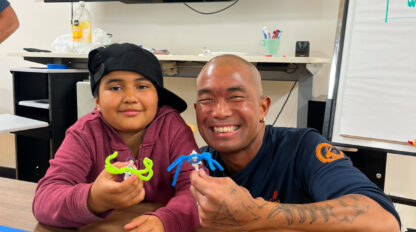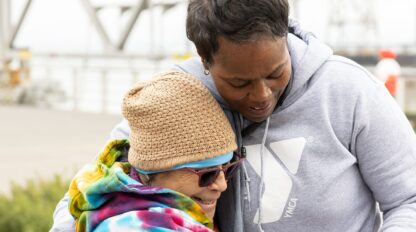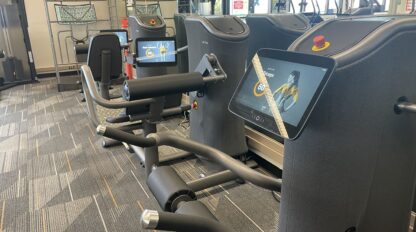Building access into the Tech and Design Industry

There are a few ways to break into the design and tech industry- through the people you know, or the degree you have. For those who lack such networks or accolades, design portfolios can help get their foot in the door.
Many underserved districts never gain the skills to join the million-dollar tech and design business industry; here in San Jose, Silicon Valley, and San Francisco this is a trillion-dollar industry. Jennifer Wong, who instructed Tech and Design program, speaks about portfolios as a type of loophole for creatives- “There’s less of a need for expensive education, which is often not an option for people from low-income or disadvantaged backgrounds. Hiring managers are more likely to overlook a candidate’s pedigree if they can demonstrate their design skills in a portfolio. This is why design is a gateway into economic opportunity.” This past summer she taught a Tech and Design class for students to build online design portfolios.
Wong, who works for Dropbox, spearheaded the course. Her passion is in design and leveraging it for community impact. “You don’t need to study this in college, and you don’t need a family name. Building a portfolio can get you there,” Jennifer explains.
Workforce programs at the Y give young adults the opportunity to overcome employment disadvantages as well as socioeconomic and educational gaps. Our Service Connectors and Family Resource Centers place young adults into workforce classes dedicated to job readiness. When talking about the variety of programs offered this year in reaction to the pandemic, Angela Scott, the Workforce Director at Bayview Hunters Point YMCA, says the classes often change according to the needs of the community.
Not every workforce program comes out of disarray. As we all took to sheltering in place, online and digital platforms became more important for career development. Our programs, like Tech and Design, also come out of local interest and empowerment. The course was developed in partnership with Dropbox. Our collaboration aimed to build access and job readiness to underserved communities with technological and connection issues. District 10 struggled disproportionately with these issues, and during the summers pandemic this became even more notable. Dropbox supplied the design software for students, while YMCA of San Francisco maintained the technological and programmatic support. The class taught design, technology theory and skills to young adults who would leave with online portfolios that included wireframe, color design, customer experience testing, and more.
This was not an easy course by any means. The class met this summer for two days a week. There were pop quizzes, industry panel guest speakers, instructor office hours, and even study teams until mid-October. Jennifer admits it was a lot of work, but equally rewarding.
“The focus of the class is to analyze popular apps and understand why people choose to use them. We studied these apps through the lens of business and product psychology. We taught the principles of design, how to conduct user research in order to identify problems with these apps, how to create unique sketches and solutions to those problems and then how to test if they are intuitive or valuable to the user.” All of that work, including wireframing, design concepts and a finalized prototype would become a part of the student’s portfolio.”
Creating Designers and Empowering Creatives

When asked what he liked the most about the class Pen replied, “I like too many things to pick a favorite,” then listed more than ten things, from mentorship to learning how to build wireframes.
His classmate Christopher elaborates, “The thing I enjoyed the most about the class is the problem discovery and finding the solutions for the app that I was redesigning. For example, my app I chose to redesign was the Dictionary app. And the problem I noticed is that as a user, I tend to forget the definition to a word I recently looked up; and that was mostly because there wasn’t anything to challenge me to see if I actually remembered what I learned. So, I came up with test and word games that can help users retain the new material that they’ve recently learned.”
An online design course for young adults is difficult during a pandemic, so Jen had to get creative. The class did design challenges for extra credit. Student took on the extra work, resulting in innovative designs they produced in teams and independently.
“Chris redesigned the dictionary app. He started off on a narrow research plan but eventually broadened his plan and maximized his learnings. He learned that people would get overwhelmed by all the results, so he simplified the results to have more focused learning. Through research, he also learned that people wouldn’t have opportunities to practice new words, so he designed word games. Chris transformed the app from a passive experience into a fun, engaging, and active one. ” Jen said. “Initially, he was shy but opened up over time and became an amazing collaborator. He learned to articulate his design decisions more succinctly. This is demonstrated in his work and portfolio.”

See Christopher’s video here.
This course focused on techniques and convention, but also took a dive into the ethics of design and apps. Some students worked on privacy solutions and children guidelines for parents. And the course had guest speakers focused on women, Black, and Latinx professionals in the tech and design industry.
“Our goal was to impart skills in critical thinking, problem solving, and collaboration. We also focused on building confidence and inspiring creative expressions of thought. That’s what we wanted to do from the beginning, and we succeeded.” Jen reflected.
This program is our first collaboration with Dropbox. Not only has Dropbox provided learning resources, they also provided mentors as well who are Product Designers at Dropbox. Jennifer Wong wants to develop more programs in the future. The Tech and Design program was based out of Bayview Hunters Point YMCA’s workforce program, but is virtual, making it accessible to those outside of District 10.
Workforce programs provide the job access, skills, and enrichments that underserved communities need to succeed. For more information on workforce programs, please visit our website at https://www.ymcasf.org/workforce-development


